DODDER is a common name used to refer to a variety of species in the genus Cuscuta, which are relatives of Morning Glories (family Convolvulaceae).
In spite of their relatedness, Dodders can look very different from their glamorous cousins because they have inconspicuous flowers and bright orange-yellow stems.
In fact, the unusual color of these stems reflect an obscure truth about Dodders: their dependency on other plants to obtain food and water.
Dodders wrap tightly their flexible stems around the twigs of other plants and produce a specialized root-like structure called haustoria, which penetrate the host’s tissue and steal water and mineral nutrients from them.
Separating species of Dodders has always been a notoriously difficult task for taxonomists, and reliable species identification often require the assistance from specialists in this group such as Dr. Joel McNeal from Kennesaw State University.
There are over nine species of Cuscuta reported for the Caribbean islands, all of them with a wide distribution extending to continental areas: C. americana, C. boldinghii, C. campestris, C. globulosa, C. gronovii, C. indecora (varieties indecora and neuropetala), C. obtusiflora (variety glandulosa), C. pentagona, and C. umbellata.
Most species of Dodder share their habitat with another similar-looking parasitic plant: the Love Vine (Cassytha filiformis, Lauraceae). Love Vines are the only other parasitic plant in the Caribbean with twining stems, and they can be recognized by their greenish stems, elongated inflorescences with few spaced bright white flowers, and rounded fleshy fruits.
Visit my post on Love Vines for pictures and more information on how to separate them from Dodders.
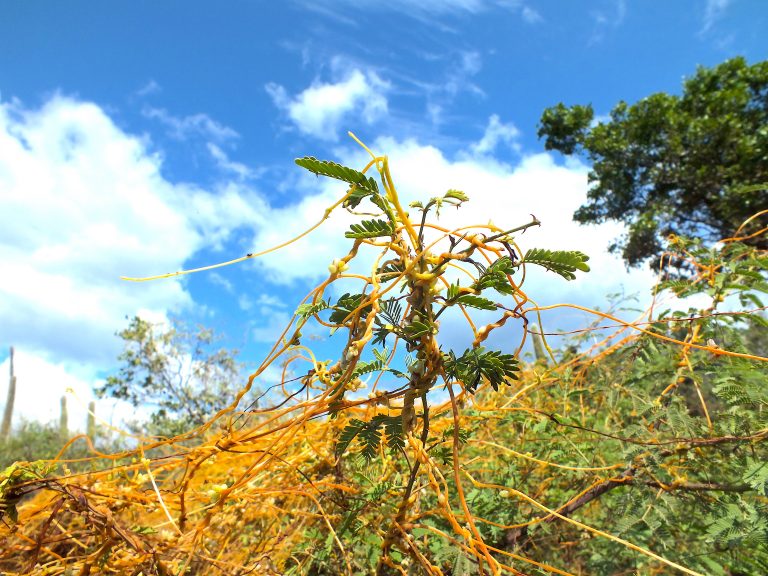
Dodder (Genus Cuscuta)
Yellow stems change to bright orange as they age
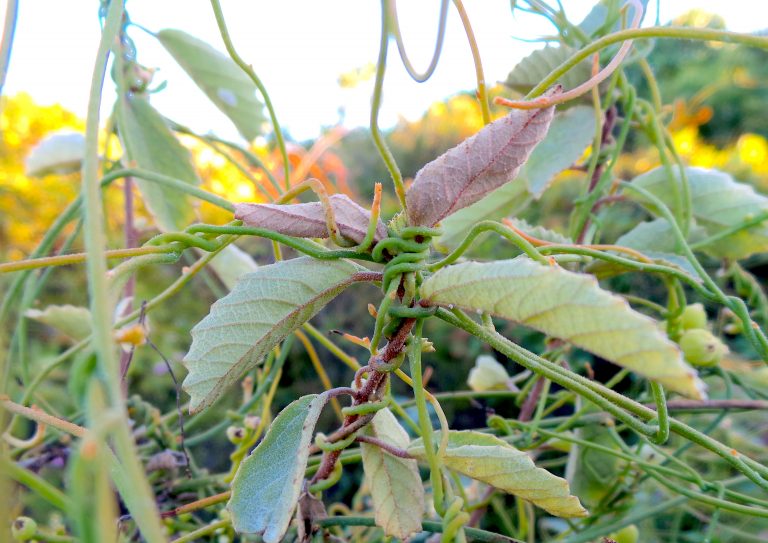
Love Vine (Genus Cassytha)
Orange stems became dull green as they age
The parasitic nature of Dodders makes them fascinating for molecular studies, as their haustorial connections can also serve as bridges to transfer genes and small RNA’s between parasite and host. There are many scientists now studying the molecular biology of Dodders, including Dr. Claude dePamphilis and Dr. Mike Axtell from Penn State University.
Another interesting topic about Dodders is that sometimes they “feed” on other parasitic plants. This situation, known as hyperparasitism (when a parasitic organism parasitize another parasite), can just be a biological curiosity. However, some parasites (such as animals and fungi!) can develop specialized adaptations to grow only on other parasites, as in the case of several lineages of tropical mistletoes which grow exclusively on other mistletoes.
The picture below shows a Dodder hyperparasitizing a Leechbush Mistletoe (genus Dendropemon), which was growing on a Catalpa tree in Haiti.
Future studies on Dodder can allow us to understand more on how having a parasitic lifestyle can influence aspects of their molecular evolution such as genome size, organelle structure, and the ability to steal and incorporate genes from diverse hosts.
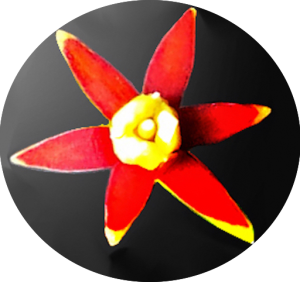
 Copyright protected by Digiprove © 2021 Marcos Caraballo
Copyright protected by Digiprove © 2021 Marcos Caraballo
0
0
votes
Article Rating
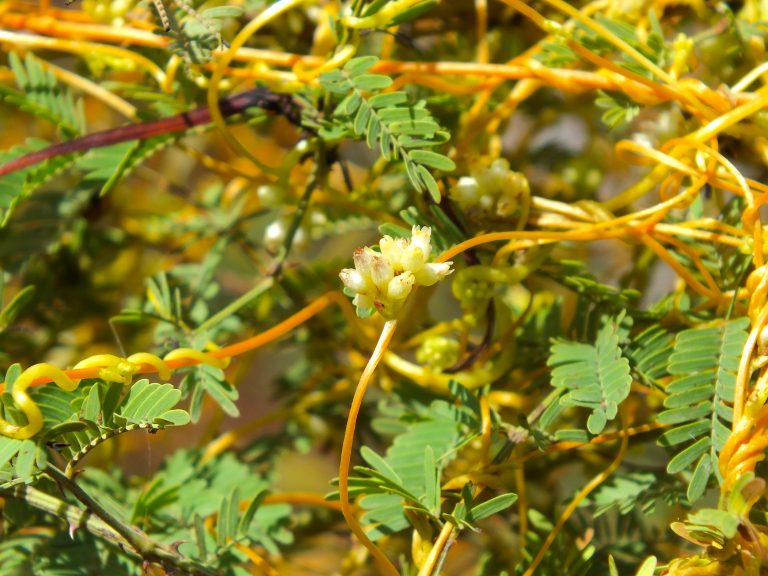
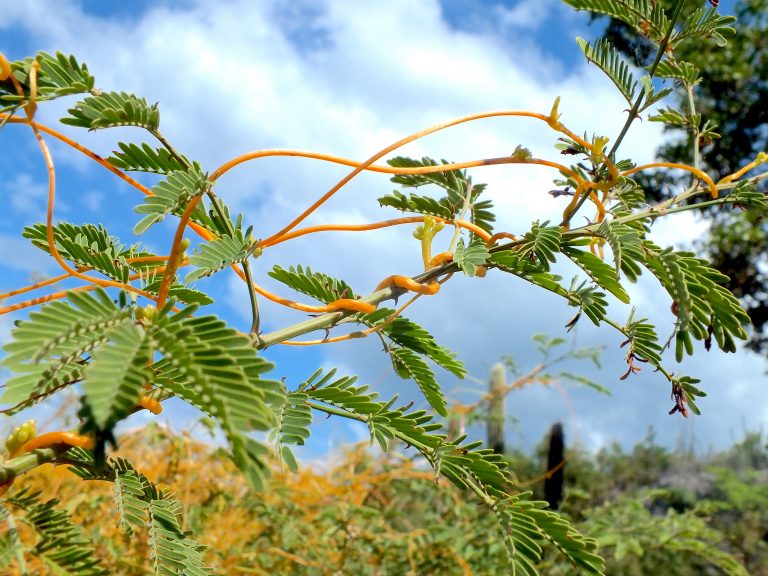
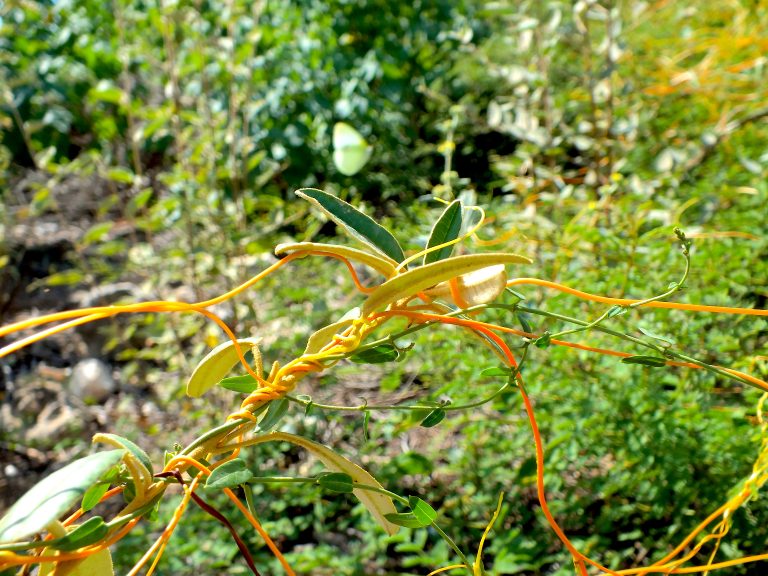
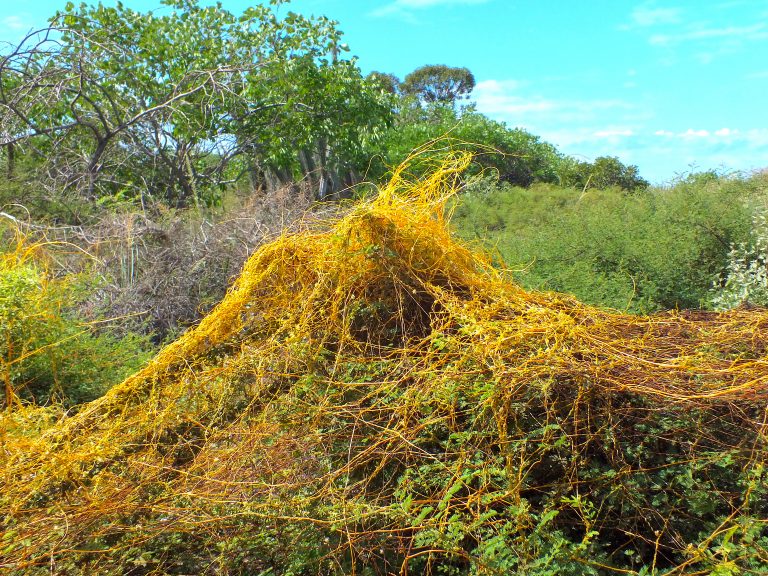
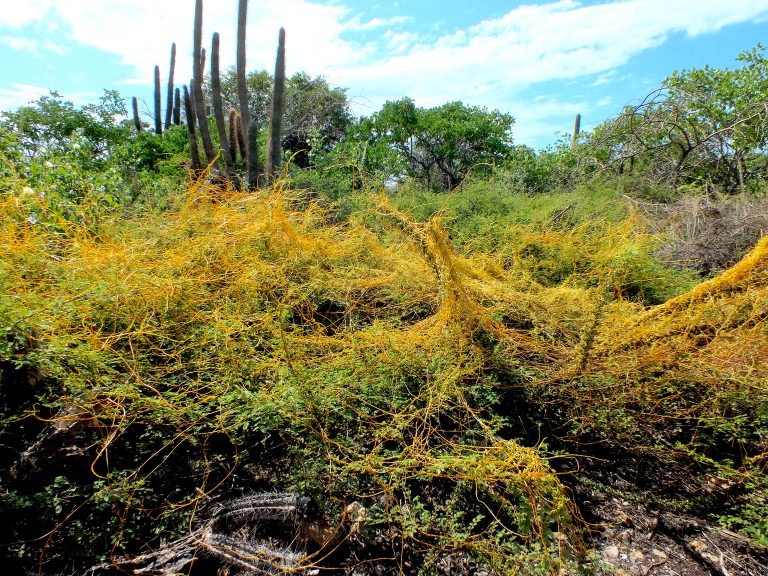
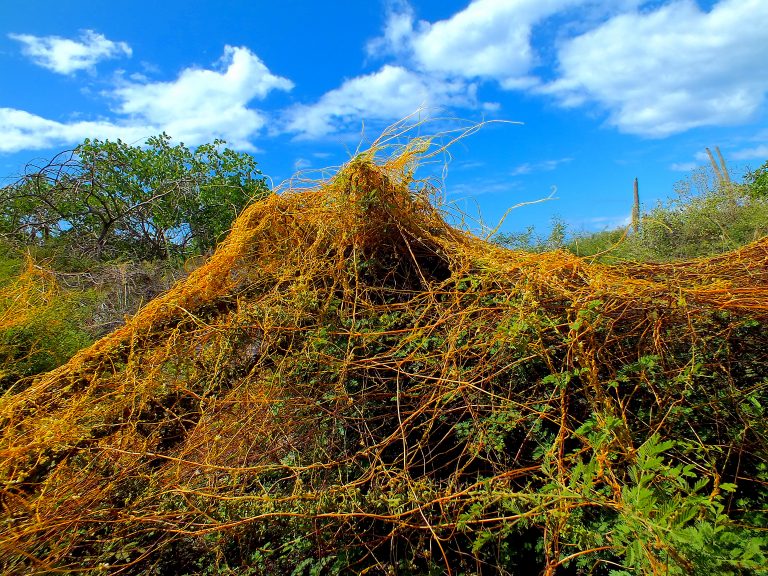
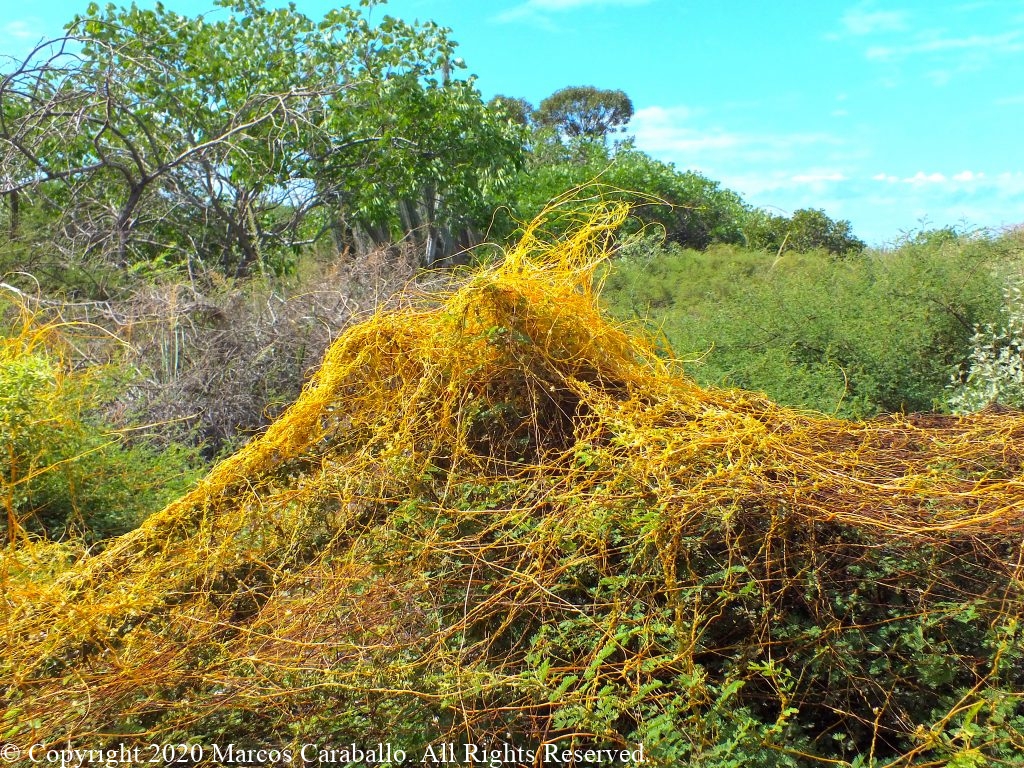
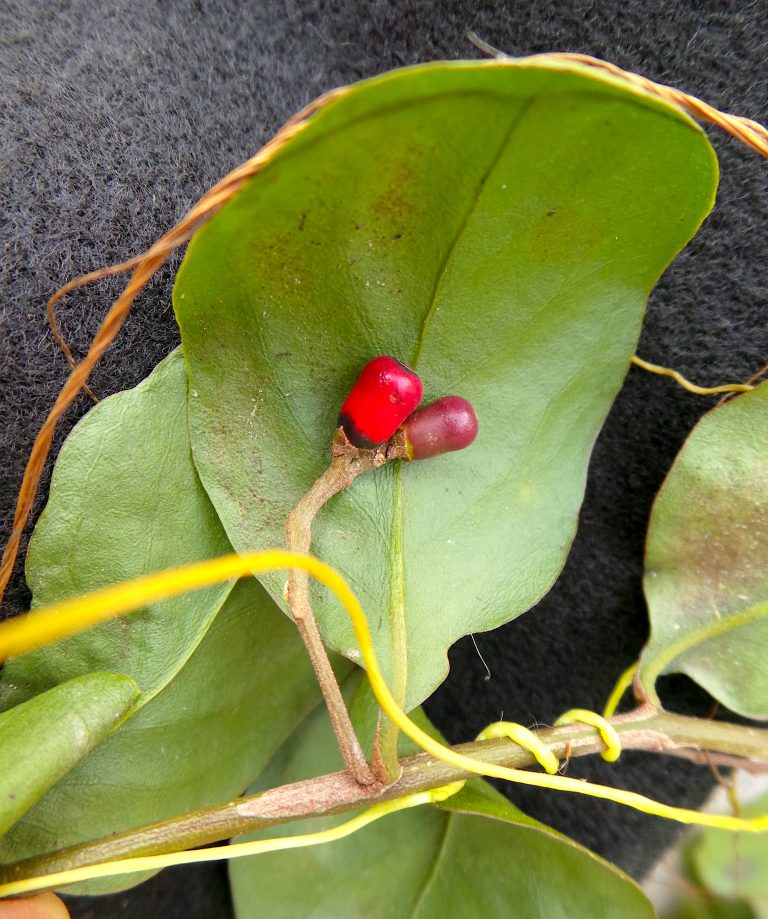
[…] Check out my post on Dodders for more pictures and information! […]